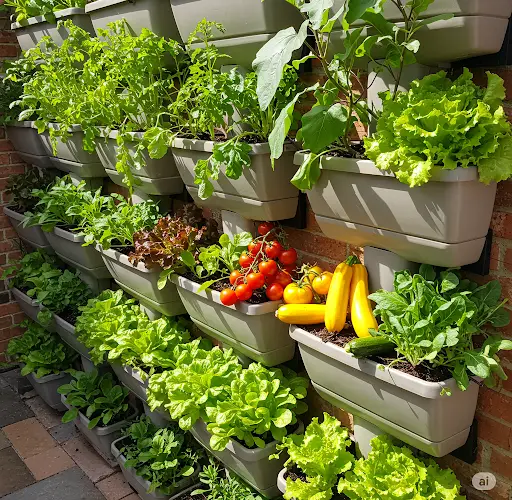Urban living and limited outdoor spaces have led many gardeners to seek innovative ways to cultivate their own produce. Vertical vegetable gardening offers a practical solution, allowing gardeners to maximize yield by growing upwards rather than outwards. This method not only conserves space but also enhances plant health and accessibility.
Benefits of Vertical Vegetable Gardening
1. Space Efficiency
Vertical gardening is ideal for small yards, balconies, or patios. By utilizing vertical structures, gardeners can grow a variety of vegetables in confined areas without compromising on yield.
2. Improved Plant Health
Elevating plants off the ground enhances air circulation, reducing the risk of fungal diseases and pest infestations. It also makes harvesting and maintenance more manageable.
3. Aesthetic Appeal
Vertical gardens can transform bare walls or fences into lush, green spaces, adding visual interest and beauty to any area.
Selecting Suitable Vegetables
Not all vegetables are suited for vertical growth. Climbing and vining plants are the most compatible with vertical structures. Some suitable options include:
-
Tomatoes: Require sturdy support; indeterminate varieties are especially suited for vertical growth.
-
Cucumbers: Climbing varieties thrive on trellises and produce straighter fruits when grown vertically.
-
Pole Beans and Peas: Natural climbers that benefit from vertical support.
-
Zucchini and Squash: Certain varieties can be trained to grow upwards with adequate support.
-
Eggplants and Peppers: While not natural climbers, they benefit from staking to support heavy fruits.
Building Your Vertical Garden
1. Choose the Right Structure
Depending on the vegetables selected, various structures can be employed:
-
Trellises: Ideal for cucumbers, beans, and peas.
-
Cages or Stakes: Suitable for tomatoes, peppers, and eggplants.
-
Wall Planters or Hanging Baskets: Perfect for herbs and leafy greens.
-
Pallet Gardens: An economical option for growing a variety of plants in a compact space.
2. Ensure Proper Support
Secure structures firmly to withstand the weight of mature plants and exposure to wind. Regularly inspect and reinforce supports as needed.
3. Soil and Watering Considerations
Use high-quality, well-draining soil rich in organic matter. Vertical gardens may dry out faster, so consistent watering is crucial. Implementing a drip irrigation system or self-watering planters can help maintain optimal moisture levels.
Maintenance Tips
-
Regular Pruning: Encourages healthy growth and prevents overcrowding.
-
Fertilization: Feed plants with appropriate nutrients to support vertical growth and fruit production.
-
Pest Monitoring: Keep an eye out for pests and diseases, addressing issues promptly to prevent spread.
-
Rotation: Rotate crops annually to maintain soil health and reduce disease risk.
Creative Ideas for Vertical Gardening
-
Living Walls: Install modular panels filled with soil and plants to create a green wall.
-
Gutter Gardens: Repurpose old gutters mounted on walls to grow shallow-rooted plants like lettuce and herbs.
-
Hanging Shoe Organizers: Use fabric shoe organizers to plant herbs and small vegetables in individual pockets.
-
Ladder Shelves: Place pots on the steps of a ladder to create a tiered garden.
Conclusion
Vertical vegetable gardening is a versatile and efficient method to grow fresh produce, especially in areas with limited space. By selecting suitable plants, employing the right structures, and maintaining proper care, gardeners can enjoy bountiful harvests while adding a touch of greenery to their surroundings.



